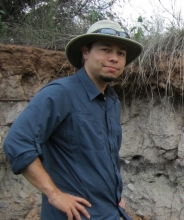CEE Seminar: Unpacking the Matryoshka Doll: the Nested Nature of Hydrologic Systems

Assistant Professor of Hydrology
New Mexico Institute of Mining and Technology
Abstract: Mechanistic understanding of watershed and river corridor processes is critical for modeling and prediction and to sustainably manage water resources under present and future socioeconomic and climatic conditions. Just like a nest of Russian matryoshka dolls, hydrologic systems are characterized by structures that are buried within one another. As we unpack smaller dolls, we find commonalities but also important differences that set aside each scale. For more than half a century, starting with Hubbert’s and Tóth’s seminal works, we have conceptualized hydrologic systems as a collection of nested flow paths ranging from small-scale circulation underneath river bedforms to large regional groundwater flow. This nesting has important implications for flow, storage and transformations within hydrologic systems, and therefore it is fundamental to appropriately transfer information across scales. In this talk, I focus on two processes constrained by nested flow: (i) recharge and runoff generation in mountain watersheds and (ii) connectivity along river corridors. First, I explore the role of nesting in mountain watersheds and how it controls the contribution of groundwater to runoff, residence times and geochemical evolution of water. In particular, I highlight the role of river network structure, topography, geology and climate as key modulating and driving mechanisms. Understanding the interplay among these mechanisms is fundamental to upscale and assimilate watershed processes into weather and climate models. Second, I turn my attention to river corridors and investigate how nesting of flow paths influences key reactions controlling water quality due to increasing contact time with geochemically and microbially active sediments in hyporheic zones, floodplain areas, and ponds and lakes. Here I focus on our ability to use local scale understanding to propose upscale models that can be used for predictions along river networks over continental scales. Parsimonious models that take advantage of this understanding will play a key role in the design, implementation and evaluation of sustainable management practices that target both water quantity and quality at the scale of the nation.
Bio: Jesus Gomez-Velez is an assistant professor of hydrology at New Mexico Tech. He received a B.S. in civil engineering from the National University of Colombia at Medellin and M.S. degrees in hydrology and applied mathematics from New Mexico Tech. He also received his Ph.D. in Earth and environmental science from New Mexico Tech in 2013. From 2013 to 2015, Gomez-Velez worked as a National Research Program postdoctoral fellow at the USGS in Reston, Va. His research combines numerical modeling, data mining and assimilation, and field and laboratory observations to gain a deeper understanding of how water, solutes and energy move through landscapes and river systems, and the implications of these transport processes for humans and ecosystems. Currently, most of his work focuses on the interactions between surface water and groundwater at multiple spatial and temporal scales, ranging from small river bedforms and reaches to continents.
Share
Upcoming Events
-
MSE Special Seminar: Architecting 3D Complex Materials for Sustainability
-
MSE Special Seminar: Decarbonizing Industries for a Climate-resilient Future - From Renewable Energy to Sustainable Material Recovery
-
MAE 298 SEMINAR: Technology Developments for FIR Bolometric Detector Focal Plane Assemblies
-
CBE 298 Seminar: The Wisdom of the Crowd: Watching Bacterial Collectives (Re)shape Themselves
-
CEE Seminar: BIM and the Digital Twin
